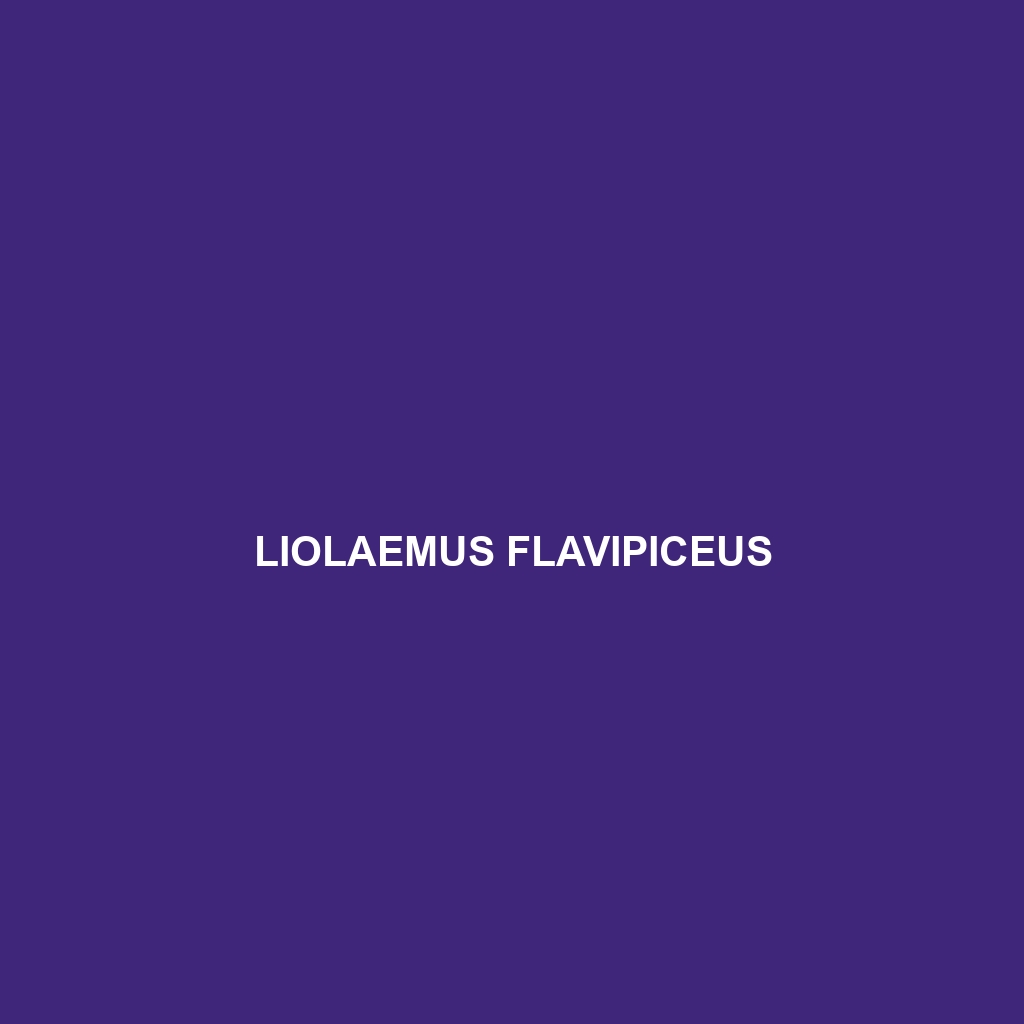-

Liolaemus grosseorum
Liolaemus grosseorum is a vibrant medium-sized lizard native to the southeastern Andes in Argentina, known for its striking coloration and robust body. Primarily insectivorous, these diurnal lizards play a crucial role in local ecosystems as both predators and prey.
-

Liolaemus griseus
Discover the Liolaemus griseus, or gray liolaemus, a medium-sized lizard native to the temperate forests of Argentina and Chile, known for its gray coloration that provides excellent camouflage. This insectivorous species thrives in seasonal climates, exhibiting fascinating behaviors, such as distinct courtship displays and efficient foraging strategies.
-

Liolaemus gravenhorstii
Discover the fascinating Liolaemus gravenhorstii, or sand lizard, which thrives in the temperate zones of the southern Andes, showcasing a vibrant coloration and remarkable adaptability in diverse habitats. This diurnal insectivore plays a critical role in its ecosystem by controlling insect populations and serving as prey for larger predators.
-

Liolaemus flavipiceus
Liolaemus flavipiceus, the yellow-backed lizard, is a diurnal insectivore native to the temperate forests of Chile and Argentina, measuring 12 to 18 cm in length with distinctive yellow and mottled body coloring. Known for its vibrant behavior during the breeding season and unique viviparous reproduction, this species plays a crucial role in maintaining ecosystem balance…
Search
Popular Posts
-
Lygosoma corpulentum
Discover the Lygosoma corpulentum, or fat skink, a robust insectivorous lizard native to Southeast Asia’s moist tropical rainforests and varying habitats. With a stocky body, impressive camouflage, and remarkable adaptability, this ovoviviparous species plays a crucial role in maintaining ecological balance.
-
Lygosoma boehmei
Lygosoma boehmei is a slender, nocturnal insectivore found in humid tropical rainforests and savannas of Southeast Asia, exhibiting a smooth, camouflaging texture and remarkable burrowing abilities. This vulnerable species plays a crucial role in its ecosystem by controlling insect populations and serving as prey for larger predators.
-
Lygosoma bampfyldei
Lygosoma bampfyldei, commonly found in tropical and subtropical regions, is a moderately sized lizard measuring 15 to 25 cm, known for its elongated body and glossy, camouflage coloration. This insectivorous species thrives in moist habitats and plays a vital role in maintaining ecological balance by controlling insect populations.
Categories
Tags
animal adaptations (924) animal behavior (5000) animal reproduction (865) behavior (920) biodiversity (7853) conservation (1670) conservation efforts (1778) conservation status (5748) diet (2104) ecological balance (2087) ecological role (1952) ecosystem (1469) ecosystem role (2901) endangered species (2514) habitat (3280) habitat conservation (1136) Habitat Destruction (1421) habitat loss (3385) herpetology (870) insectivorous reptiles (948) IUCN Red List (1971) lizard behavior (881) lizard diet (944) lizard reproduction (1101) nocturnal animals (2754) nocturnal behavior (2592) nocturnal reptiles (1061) physical characteristics (2058) predator-prey relationships (927) reproduction (2890) reptile behavior (1037) reptile conservation (1348) reptile reproduction (1069) rodent species (1325) seed dispersal (2145) Seed Disperser (979) small mammals (1168) snake behavior (952) snake diet (1061) snake reproduction (1129) tropical forests (948) Vulnerable Species (4926) wildlife (2511) wildlife conservation (5355) wildlife protection (1008)







